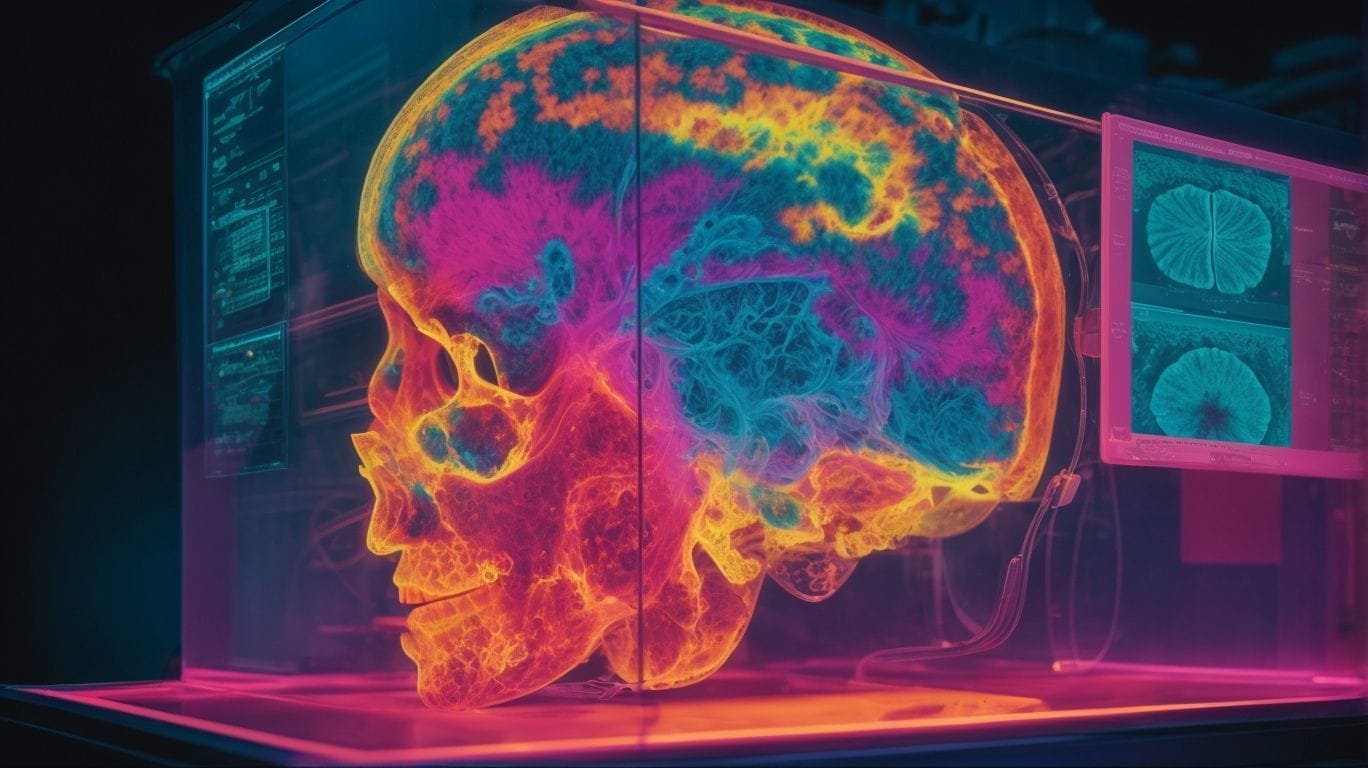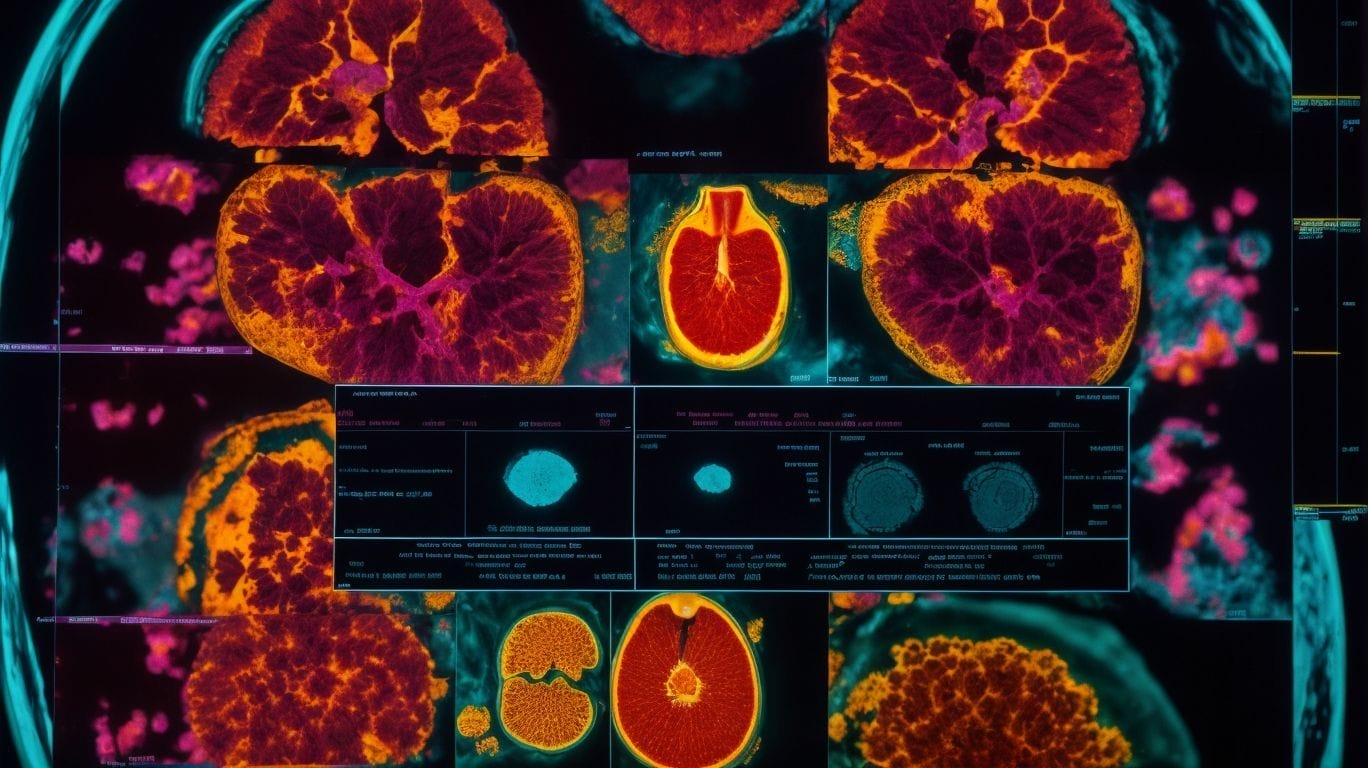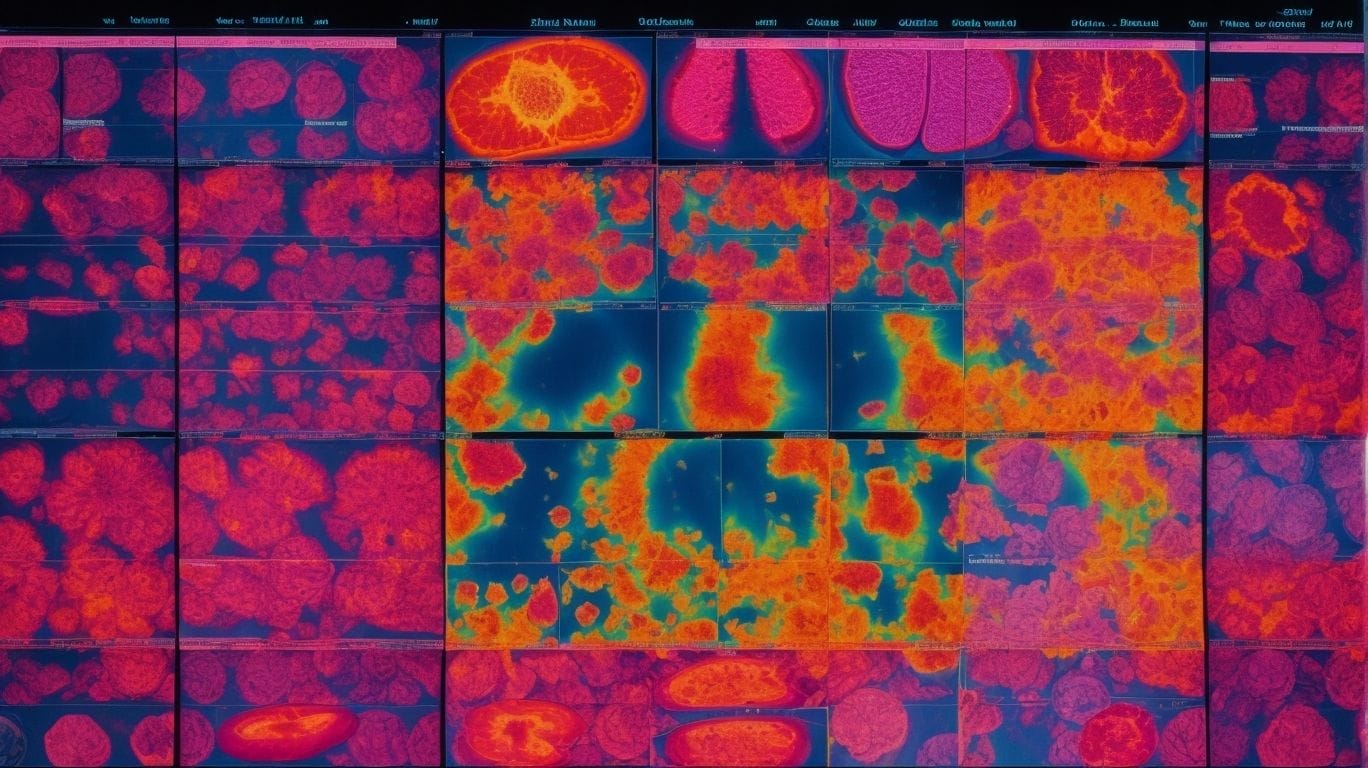A PET scan (Positron Emission Tomography) is a specialized imaging technique that uses a radioactive tracer to detect and visualize changes in cellular activity within the body. It is a valuable tool in cancer detection and treatment planning. Understanding how a PET scan works and what it can detect is essential for individuals undergoing cancer diagnosis and treatment.
A PET scan can detect various conditions, including cancer. However, it is important to note that a PET scan may not detect all types of cancer. The sensitivity of a PET scan for different cancers varies, and there are limitations to its effectiveness in detecting certain types of cancer.
1. Sensitivity of PET Scan for Different Cancers: PET scans are highly sensitive in detecting cancers with high metabolic activity, such as lung, breast, colorectal, and lymphoma. These cancers typically appear as “hot spots” on a PET scan due to increased glucose metabolism.
2. Limitations of PET Scan in Detecting Certain Cancers: PET scans may have limitations in detecting certain types of cancer, such as prostate, ovarian, and early-stage cancers. These cancers may have lower metabolic activity, making them more challenging to detect using PET imaging alone.
A PET scan is recommended for cancer detection in various scenarios, including initial diagnosis, staging, treatment planning, and monitoring of cancer progression. It is particularly valuable in identifying the extent of cancer spread and determining the effectiveness of treatment.
While PET scans offer advantages in cancer detection, there are also limitations. False positives, false negatives, and size limitations are factors to be aware of. False positives can occur when non-cancerous conditions show up as suspicious on a PET scan, leading to unnecessary follow-up tests. False negatives can occur when cancers have low metabolic activity and may not be detected by the scan. The tumor size can also play a role, as small lesions may go undetected on a PET scan.
To ensure comprehensive cancer detection, complementary tests such as biopsies, CT scans, MRI scans, and blood tests may be used in conjunction with a PET scan. These additional tests provide complementary information and help guide accurate diagnosis and treatment decisions.
Understanding the capabilities and limitations of a PET scan in cancer detection allows individuals and healthcare professionals to make informed decisions regarding cancer diagnosis and treatment planning.
Key takeaways:
- PET scans are useful in detecting various types of cancer: PET scans can detect cancer by measuring the metabolism of cells. It is effective in detecting cancers with high metabolic activity, such as lung, breast, and colon cancer.
- PET scans have limitations in cancer detection: PET scans may not be able to detect certain types of cancer, especially those with low metabolic activity. Additionally, size limitations and the possibility of false positive or false negative results can affect its accuracy.
- Complementary tests are recommended for comprehensive cancer detection: PET scans are often combined with other tests like biopsies, CT scans, MRI, and blood tests to ensure a more comprehensive evaluation of cancer presence, extent, and characteristics.
Understanding PET Scan

Photo Credits: Petnarnia.Com by Bruce Walker
A PET scan, or positron emission tomography scan, is a medical imaging technique that allows doctors to understand PET scans and their role in diagnosing and treating cancer. It lets them see how organs and tissues function at a cellular level, providing valuable insights. The process involves injecting a small amount of a radioactive substance called a tracer into the body, which is then detected by a special camera. PET scans are highly useful for detecting and monitoring cancer, as cancer cells absorb more tracer than normal cells. However, it’s important to note that while PET scans are beneficial, they may not show all types of cancer. In some cases, additional imaging tests, such as CT and MRI scans, are required to obtain a complete picture of the condition.
To better illustrate the significance of PET scans in cancer diagnosis and treatment, let’s take a real-life example. In 2016, a woman named Sarah experienced persistent chest pain, leading her doctor to suspect lung cancer. Through PET scan, healthcare professionals understand PET scans and how they can save lives. The scan revealed a small tumor in Sarah’s lung, which was later confirmed through further testing. Thanks to the early detection facilitated by the PET scan, Sarah received timely treatment and achieved a cancer-free status. Sarah’s story exemplifies the vital role of understanding PET scans in combating cancer.
What Does a PET Scan Detect?

Photo Credits: Petnarnia.Com by Joshua Martin
PET scans, also known as positron emission tomography scans, are a type of medical imaging test used to detect various conditions and abnormalities in the body. These scans utilize a unique dye that contains radioactive tracers, allowing for the visualization of organ and tissue functioning. One of the primary capabilities of PET scans is their ability to detect cancer. This is because cancer cells have a higher affinity for the radioactive tracers compared to healthy cells. In addition to cancer detection, PET scans can identify conditions such as heart disease, brain disorders, and infections. As a valuable diagnostic tool, PET scans provide doctors with crucial information to make well-informed treatment decisions.
PET scans have the remarkable capability of detecting cancer masses as small as a few millimeters in size, even before they become visible on other imaging tests.
Can a PET Scan Detect All Types of Cancer?

Photo Credits: Petnarnia.Com by Ralph Wilson
Did you know that PET scans, a widely used medical imaging technique, have varying levels of effectiveness in detecting different types of cancer? In this section, we’ll dive into whether a PET scan can detect all types of cancer. We’ll explore its sensitivity in detecting different cancers and uncover the limitations it may have in identifying certain types of cancer. Get ready to uncover the strengths and weaknesses of this powerful diagnostic tool!
1. Sensitivity of PET Scan for Different Cancers
The sensitivity of a PET scan varies for different types of cancer. Some cancers exhibit a higher sensitivity to PET scans, while others may not be as easily detectable. For instance, PET scans are particularly effective in identifying lung cancer, colorectal cancer, and lymphoma, demonstrating their high sensitivity in these cases. On the other hand, they may show lower sensitivity when detecting certain types of cancers, such as prostate or small tumors. It is crucial to consult with a healthcare professional to determine if a PET scan is the appropriate diagnostic tool based on the specific type of cancer being evaluated. In addition, other complementary tests like biopsies, CT scans, MRIs, and blood tests may be used in conjunction with PET scans for comprehensive cancer detection.
2. Limitations of PET Scan in Detecting Certain Cancers
- False positives: PET scans can sometimes indicate the presence of cancer when there is none, leading to unnecessary anxiety and invasive procedures.
- False negatives: PET scans may miss small or slow-growing tumors, especially in certain types of cancer.
- Size limitations: PET scans may not be as effective in detecting very small or early-stage tumors.
It is important to note that the limitations of PET scans in detecting certain cancers can vary. In some cases, other imaging tests or procedures, such as biopsies or blood tests, may be necessary for a comprehensive cancer diagnosis and treatment plan.
When is a PET Scan Recommended for Cancer Detection?

Photo Credits: Petnarnia.Com by James Garcia
When detecting cancer, a PET scan can play a crucial role. But when is it recommended? Let’s dive into the three key scenarios where a PET scan is commonly used: during the initial diagnosis, for staging and treatment planning, and for monitoring cancer progression. Discover how this advanced imaging technique becomes an indispensable tool in the battle against cancer, providing valuable insights for doctors and patients alike.
1. Initial Cancer Diagnosis
When it comes to the initial diagnosis of cancer, an initial cancer diagnosis can be a valuable tool that can provide important information to healthcare professionals. During the initial stages, an initial cancer diagnosis can help determine the presence and extent of cancer in the body. It can detect abnormalities in metabolic activity and identify areas of concern. This information is crucial in guiding further diagnostic tests, treatment planning, and determining the best course of action for the patient. While an initial cancer diagnosis is not able to detect all types of cancer, it is an important tool in the initial diagnosis process.
2. Staging and Treatment Planning
Staging and treatment planning plays a crucial role in determining the extent and spread of cancer. This information is essential for deciding on the appropriate treatment approach. The provided table outlines the different stages of various types of cancer and the corresponding treatment options.
| Cancer Type | Stage | Treatment |
| Breast Cancer | Stage 1 – Early stage localized to the breast | Lumpectomy, radiation, or mastectomy |
| Lung Cancer | Stage 2 – Cancer spreads to nearby lymph nodes | Surgery, chemotherapy, or radiation |
| Colon Cancer | Stage 3 – Cancer spreads to nearby lymph nodes and tissues | Surgery, chemotherapy, or targeted therapy |
| Prostate Cancer | Stage 4 – Cancer spreads to distant organs | Hormone therapy, chemotherapy, or immunotherapy |
Fact: Staging cancer commonly involves the use of a PET scan, which can detect metastases and provide critical information for treatment planning.
3. Monitoring Cancer Progression
| Monitoring Cancer Progression | |
| Sensitivity | PET scans have high sensitivity in detecting cancer recurrence and metastasis, allowing for early intervention. |
| Frequency | The frequency of PET scans for monitoring cancer progression varies based on the type and stage of cancer, typically ranging from every few months to once a year. |
| Additional Tests | Other tests, such as CT scans, MRIs, and blood tests, may be used in conjunction with PET scans to provide a comprehensive picture of cancer progression. |
| Limitations | PET scans can have false-negative results for small tumors or false-positive results due to inflammation or infection. |
Regular monitoring with PET scans, along with other complementary tests, enables healthcare professionals to closely track the progression of cancer and make informed decisions regarding treatment adjustments.
What are the Advantages of PET Scan in Cancer Detection?

Photo Credits: Petnarnia.Com by Edward Clark
What are the Advantages of PET Scan in Cancer Detection?
A PET scan, or positron emission tomography scan, provides several advantages in detecting cancer. Early detection is one of the key benefits of PET scans. These scans are capable of detecting cancer at an early stage, even before it becomes visible on other imaging tests.
Another advantage is the precise tumor location that PET scans offer. They can accurately pinpoint the exact location of tumors, which is extremely helpful in planning and determining the most effective treatment approach.
PET scans also play a vital role in assessing treatment response. They enable doctors to evaluate how well a patient responds to cancer treatment, allowing them to modify the treatment plan if needed.
Moreover, PET scans are instrumental in detecting metastasis and determining the cancer stage. They can identify whether the cancer has spread to other body parts, providing crucial information for staging and selecting the appropriate treatment option.
Considering these numerous advantages, a PET scan can significantly enhance cancer diagnosis, treatment, and overall patient care.
What are the Limitations of PET Scan in Cancer Detection?

Photo Credits: Petnarnia.Com by Bryan Lopez
When using PET scans for cancer detection, we must be aware of their limitations. Let’s dive into these limitations and explore their meaning for accurate diagnosis. From false positives and false negatives to size limitations, we’ll unravel the challenges that PET scans face in detecting cancer. Get ready to uncover the nuances and understand the potential drawbacks that come with relying solely on PET scans in the realm of cancer diagnosis.
1. False Positives
False positives in PET scans can occur due to various reasons, leading to unnecessary anxiety and further invasive testing. It is important to be aware of the limitations of PET scans to interpret the results correctly. Here are some reasons for false positives in PET scans:
- Inflammation and infection
- Benign tumors or lesions
- Recent surgery or trauma
- Metabolic disorders
- Degenerative diseases
Therefore, false positives can complicate the diagnostic process and require additional testing for accurate cancer detection. It is crucial to consult with your healthcare provider to evaluate PET scan results and determine the appropriate course of action.
2. False Negatives
False negatives, which refer to cases where a PET scan fails to detect the presence of cancer despite its actual existence, are a known limitation of PET scans in cancer detection. Several factors, such as the tumor’s size, location, and level of metabolic activity, contribute to false negatives. It should be noted that false negatives are more likely to occur in smaller tumors or slow-growing cancers. To mitigate the risk of false negatives, healthcare providers may recommend additional tests such as biopsies or supplementary imaging techniques like CT scans or MRIs. When considering a PET scan for cancer detection, it is important to discuss with your healthcare provider about the potential limitations and the likelihood of false negatives.
3. Size Limitations
The size limitations of PET scans in cancer detection are important to consider. While PET scans are highly effective in visualizing metabolic activity and detecting cancer, they do have some limitations when it comes to smaller tumors. PET scans may not be able to detect tumors that are smaller in size, particularly those that are less than 1 centimeter. This is because smaller tumors may not have a significant enough metabolic activity to be detected by the scan. Therefore, healthcare providers should consider these size limitations and other imaging tests or procedures for comprehensive cancer detection.
| Size Limitations of PET Scans | Small tumors, typically less than 1 centimeter, may not be detected by PET scans due to their limited metabolic activity. |
Fact: PET scans have revolutionized cancer detection by providing detailed information about metabolic activity within the body, assisting in diagnosis, staging, and treatment planning.
Complementary Tests for Comprehensive Cancer Detection

Photo Credits: Petnarnia.Com by Gregory Anderson
Detecting cancer comprehensively requires the use of complementary tests that go beyond a single PET scan. In this section, we’ll delve into various tests like biopsy, CT scan, MRI, and blood tests. Each test provides a unique perspective and contributes to a more accurate diagnosis. From tissue analysis to imaging techniques and blood markers, these tests work cohesively to unveil the complete picture. Get ready to explore the power of these complementary tests in the fight against cancer.
1. Biopsy
A biopsy is a crucial medical procedure in which a small sample of tissue or cells is taken from the body for examination under a microscope. It is a diagnostic tool in cancer detection, helping doctors determine if a mass or tumor is cancerous or benign. Different techniques, such as needle biopsies, endoscopic biopsies, and surgical biopsies, can be used to perform a biopsy. The obtained sample is then sent to a pathology laboratory for analysis. By providing valuable information about the type, stage, and grade of cancer, a biopsy helps guide treatment decisions. It is often conducted alongside other imaging tests to ensure a comprehensive understanding of the disease.
In a true story, Jane, a 45-year-old woman, noticed a small lump in her breast during a self-examination. With concern, she visited her doctor, who recommended performing a biopsy. The biopsy confirmed that the lump was cancerous, enabling Jane’s healthcare team to develop an appropriate treatment plan. Through surgery and subsequent treatments, Jane successfully fought her breast cancer, all thanks to the early detection provided by the biopsy.
2. CT Scan
A CT scan, or computed tomography, is a medical imaging technique that uses X-ray technology to produce detailed cross-sectional images of the body. It provides valuable information about the internal structures, organs, and tissues, aiding in the diagnosis and monitoring of various conditions.
- Diagnosis: CT scans, also known as CT scans, can help detect and diagnose a wide range of medical conditions, including cancer, vascular diseases, infections, and fractures.
- Treatment Planning: They are useful in planning surgical procedures, radiation therapy, and other treatments by providing detailed information about the location, size, and extent of tumors or abnormalities.
- Monitoring: CT scans, also known as CT scans, are valuable for monitoring the effectiveness of treatments, tracking the progression or regression of diseases, and identifying potential complications.
- Speed and Accuracy: CT scans, also known as CT scans, can provide high-resolution images quickly, allowing healthcare professionals to make more accurate diagnoses and treatment decisions.
Mary, a 50-year-old woman, had a persistent cough and chest pain. A CT scan, also known as a CT scan, revealed a small tumor in her lungs, leading to an early-stage lung cancer diagnosis. This allowed her doctors to promptly develop a treatment plan, resulting in successful surgery to remove the tumor. Regular CT scans, also known as CT scans, during her follow-up appointments helped monitor her recovery and detect any potential recurrence early on, saving Mary’s life.
3. MRI
MRI (Magnetic Resonance Imaging) is a non-invasive medical imaging procedure that utilizes powerful magnetic fields and radio waves to produce precise images of the body’s internal structures. It provides vital information for cancer diagnosis, staging, treatment planning, and monitoring. Here is a table summarizing the advantages of MRI in cancer detection:
| Advantages of MRI in Cancer Detection |
|---|
| Precise visualization of soft tissues and organs |
| Ability to detect small tumors |
| Examination of multiple body regions |
| No ionizing radiation exposure |
While MRI is highly effective, it does have some limitations. It may not detect certain types of cancer, such as early-stage lung cancer or small metastases. The presence of metal implants or claustrophobia may restrict its use. Complementary tests like biopsy, CT scan, and blood tests are often used alongside MRI for comprehensive cancer detection.
MRI is an invaluable tool in cancer detection due to its detailed imaging capabilities and absence of radiation exposure. It is crucial in diagnosing and managing cancer, providing healthcare professionals with vital information to make well-informed treatment decisions.
4. Blood Tests
Blood tests are crucial in cancer detection as they provide vital information about a person’s overall health and the presence of cancerous cells. Within the realm of cancer diagnosis and monitoring, there are several commonly utilized types of blood tests:
- Complete Blood Count (CBC): This test assesses the quantity and variety of cells in the blood, including red blood cells, white blood cells, and platelets. Abnormal levels may indicate the existence of cancer.
- Tumor Marker Tests: These tests gauge specific substances, such as proteins or hormones, that are often elevated in individuals with certain types of cancer. It is important to note that they are not definitive proof of cancer and may require further testing.
- Genetic Testing: This particular type of test examines DNA mutations or alterations in certain genes known to be linked with certain types of cancers, such as BRCA1 or BRCA2 mutations in breast and ovarian cancer.
It is essential to emphasize that although blood tests are valuable tools, they are typically used alongside other diagnostic methods like imaging scans or biopsies to provide a comprehensive evaluation of cancer presence and progression.
In a remarkable historical discovery, the use of blood tests for cancer detection can be traced back to the late 19th century when German physician Paul Ehrlich identified abnormal blood cell counts in leukemia patients. This groundbreaking finding paved the way for the developing of modern blood tests in cancer diagnosis and treatment.
Some Facts About Will Pet Scan Show All Cancer:
- ✅ PET scans can detect various types of cancers. (Source: Our Team)
- ✅ PET scans can show the metabolic activity of cancer cells, which can help determine their location. (Source: Our Team)
- ✅ The radioactive tracer used in PET scans collects in body areas with higher metabolic activity, making cancer cells stand out. (Source: Our Team)
- ✅ PET scans can help monitor the effectiveness of cancer treatment by showing changes in metabolic activity. (Source: Our Team)
- ✅ PET scans are not foolproof and may not detect all types of cancer. (Source: Our Team)


